Building an Amazon FBA business can be a great way to make money online if you put in the necessary time and take the proper steps. There is no magic formula behind a successful Amazon FBA business. There are, however, a number of factors that can influence how successful your store is at selling products and determine its overall chances at profitability.
Amazon FBA — aka Fulfillment by Amazon — is an eCommerce service that online businesses use to outsource order fulfillment.
This is a fantastic way to get started in the world of eCommerce. Instead of storing inventory yourself and fulfilling and shipping orders on your own as they come in, you’re sending your inventory to an Amazon fulfillment center. When a customer purchases an item from your online store, Amazon will pick, pack, and ship the order. FBA also provides customer service for your online business, and will process returns.
This guide will help you learn how to make money with Amazon FBA.
1. Complete Market Research
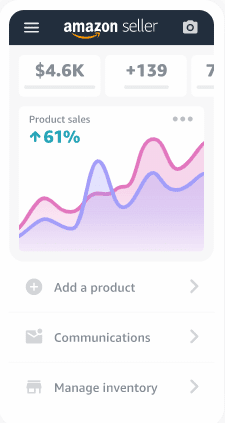
Before you create your Amazon seller account and set up FBA, the first and most important thing to do if you want to make money is do your research. You will likely find plenty of articles and case studies online about people making millions by building an eCommerce empire and selling products on Amazon, but that’s not really the research you should focus on for anything more than inspiration.
What all of these successful entrepreneurs have in common is that they created and/or found products that were in demand. Then, they did their market research to find the proper niche — the audience that needed that in-demand product the most. And, they figured out how to reach that target market.
Market research is simply using a set of techniques to gather information that will help you better understand your target market and design must-have products. Analytics might point you in the direction of “what” to sell, but research will give you the “why” behind purchasing decisions.
Analytics can tell you that someone visited your store and checked out a specific product. But, those numbers can’t tell you why someone didn’t click “Buy Now.”
Research can be as simple as listening and observing customers in your potential niche via social media. Find their Facebook groups, their Reddit boards, and trending Twitter hashtags. Consider asking a question of the group or posting a simple poll about something related to your products to find out even more about your potential customers.
The research doesn’t end with the market, though. There’s still a lot more research to do when it comes to choosing the products that you will start selling.
As soon as you go through my guide on how to make money with Amazon FBA, I recommend dedicating plenty of time to do your research and gather enough data.
2. Choose a Product
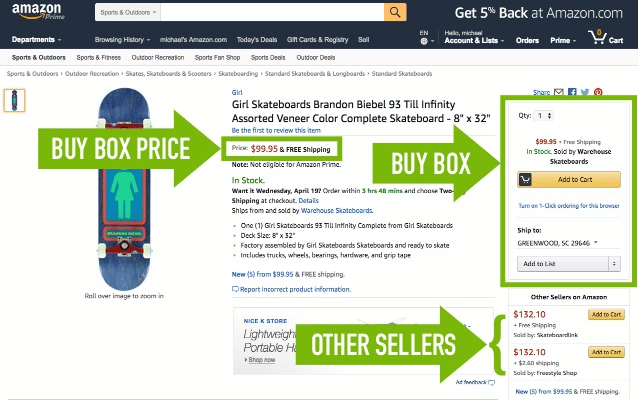
Amazon sells absolutely everything. There are already hundreds of existing well-known retailers and millions of third party sellers who use the platform to sell products. Plus, Amazon sells their own private label products on their platform. When choosing what to sell on Amazon, you must keep this in mind.
If you want to make money with Amazon FBA, the most important thing to consider is the product(s) that you choose to sell. Product research is not an easy task. It’s a methodical, time-consuming practice that can be extremely complex. The good news is, there are a number of tools and tricks you can use to make finding the right products to sell a lot easier.
- If Amazon is already selling their own private label product (i.e. Amazon Basics) that is similar to what you are thinking of selling in the exact same category, it will be nearly impossible to compete with them. They can out promote you, top you in the search results, and undercut your pricing. When choosing a product to sell on Amazon, it’s best to avoid products they are already offering up on their own private labels.
- Just because you love a specific item, that doesn’t mean it will sell well on Amazon. Instead of making product decisions based on your preferences and tastes, avoid guesswork and take a look at data and trends. You should also check out the potential competition and determine what they are doing right and/or wrong.
- Consider how you will source your products and find the right suppliers. Will you do retail arbitrage, online arbitrage, be a reseller or wholesaler, or be a private labeler?
There are several ways to source your products for your Amazon FBA business, but the most common are private labeling, retail arbitrage, online arbitrage, and wholesaling.
If you are interested in creating products with your own label, you would become a private label seller with a contracted manufacturer an add your own marketing twist. This method can offer higher profit margins, there’s no competition for the buy box, and you have creative control over the listing.
Note: The Amazon buy box is one of the most important things an Amazon FBE seller should consider when choosing products for their store. The buy box is what appears when a customer searches for an item and the product appears with a yellow “Add to Cart” button. Amazon’s algorithm will rotate the merchants offering the same product in the buy box based on price, performance metrics, and other factors. How often you get into the buy box depends on how well you compete on pricing, product availability, and customer service. If you are selling private label products, there is no competition for the buy box. This is only a factor when you are selling the same products as other retailers and Amazon sellers.
Retail arbitrage requires very little investment to get started, but it is by far the most time-consuming and laborious method for sourcing inventory. It also comes with a lot of risk. The retail arbitrage method is where you buy products from a brick and mortar retail store at a price lower than what’s offered on Amazon, then you sell those existing products at a higher price online to make a profit.
Online arbitrage is essentially the same thing as retail arbitrage, only you are buying products from another online store and reselling them on Amazon.
Wholesaling is an extremely competitive method for sourcing products, but it can also be quite lucrative. Wholesaling is when you buy in bulk to get massive discounts, and then sell those items individually on Amazon for a big profit.
Poorly Optimized Listings
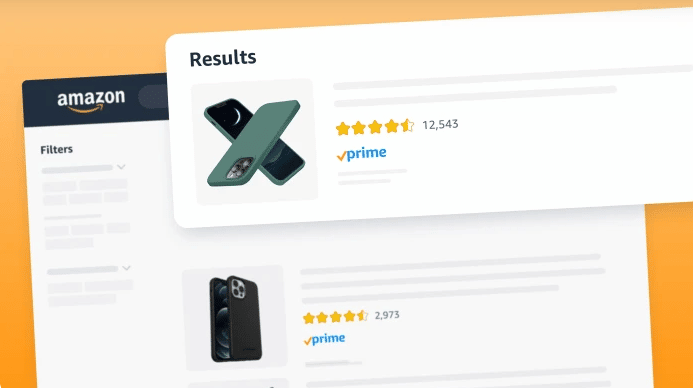
When you are doing your market and product research, one thing to be on the hunt for in your chosen niche are poorly optimized listings. The Amazon search engine starts with the search box at the top of the homepage where shoppers can search for products with keywords and phrases, and find a drop-down menu of the various departments.
When a shopper uses the search box, Amazon will produce relevant search results based on the keywords used.
As a seller, search engine optimization (SEO) is a tool you can use to engage the 300 million+ Amazon customers by properly using keywords, product images, product titles, product pricing, and product descriptions to make your store stand out.
An in-demand product in your niche that is poorly optimized can be a money-making opportunity to help build your selling reputation and your store.
Products That Need Improvement
Another thing to consider when choosing your own products — especially as a private label seller — is to find something that is already selling in the marketplace but needs improvement. This is a great strategy when selling private label products. Start by scanning product reviews to see what the competition is in the market, and to see what customers are saying.
Using a tool like AMZScout — a product database where you can find potential best sellers — you can track the daily sales and rating changes for any item you can think of. You can also watch competing products and confirm their viability before adding it to your online store.
Low Competition
Use a product tool like AMZScout to help you find items with high demand and low competition. Checking the number of Amazon sellers who are already selling the product you intend to sell is an important step when choosing products for your store.
High competition will lower chances for success. You will likely get lost in the search engine, or incur higher advertising costs to beat your competition. When potential buyers have an unlimited number of sellers to choose from who are offering the same product, it makes it extremely difficult for your store to succeed. Remember the buy box.
Low competition is also relevant with keywords, not just the items themselves. To drive traffic to your products on Amazon, consider using low competition keywords that will trigger product ads on Google. Of course, figuring out what these low-competition keywords is the challenge.
To find low competition keywords that trigger Google product ads to drive traffic, use an Amazon keyword tool like the Keyword Tool for Amazon or Ahrefs.
3. Find a Manufacturer

When you are selling private label products in your Amazon FBE store, you are selling goods that are manufactured by another company but branded and sold by your store. Think of it as putting your own twist on an existing product.
This practice is extremely common in the world’s most popular retail stores, like Walmart’s Great Value label and Dollar General’s Clover Valley label. The products offered are similar to the big name brands, but at a much lower price point.
By far, the most popular source for creating private label products for your own brand is Alibaba. Unlike its sister site Aliexpress which is open to consumers, Alibaba is a platform exclusively for global business-to-business eCommerce transactions. There are numerous manufacturers to choose from, and millions of products available that you can put under your private label and brand.
Alibaba is a Chinese company with an online platform that helps business owners purchase large quantities of products directly from manufacturers at wholesale prices. From newbies to experienced sellers, Alibaba is the go-to source for finding manufacturers to make private label products, as it is filled with merchants trying to earn your business.
Once you have contacted potential suppliers on Alibaba and discovered which ones offer the best quality products at the best prices, you can make your deal, agree to terms, place your order, and have the items shipped to an Amazon fulfillment center.
Quality Assurance
Before making a deal with a manufacturer, consider quality assurance. Selling low quality products that disappoint customers will ruin your store before it gets started. When you set your terms with the manufacturer, make sure you have proper contact information for any issues that may arise.
Timeliness and Consistency
When choosing a manufacturer, you must also consider timeliness and consistency of delivering your products to an Amazon fulfillment center so your store is always stocked with your best selling products. One of the reasons that Alibaba is so popular, besides its ease of use, is that products are quickly shipped from China at an affordable price.
Consider Macroeconomic Factors
Another thing to consider when using an international manufacturer are macroeconomic factors like the global supply chain and shipping costs.
This is an important step in learning how to make money with Amazon FBA so definitely be diligent and methodical when it comes to identifying the best manufacturer for your needs.
4. Create a Test Order
Creating an Alibaba buyer account is free and placing a test order is easy. The process does require an email address and a company name — and you should begin by personalizing your account.
When personalizing your account, let Alibaba know that you operate an online store and select up to three preferred industries for sourcing (electronics, health & beauty, gifts/sports/hobbies, clothing/textiles, jewelry/bags/shoes, etc…). You will also choose relevant sub-categories to proceed with the setup.
Because there are over 100,000 suppliers at Alibaba, you can narrow down your options based on things like their ability to customize, short lead time, and how many items are in stock. You can also get recommendations based on how often you source products and how much you plan to spend monthly, quarterly, or annually.
Order Directly Online
The buyer tools on Alibaba will guide you through the process of ordering directly online. There are instructions for finding products, contacting suppliers, negotiating, and after-sales resources.
Contact Manufacturer Directly
The ability to contact the manufacturer directly is extremely important when the goal is making money on Amazon. Because they are your product source, you must have a contact for when things go wrong. When negotiating and making a deal with a potential supplier, make sure that you have proper contact information.
5. Create Your Product Listing
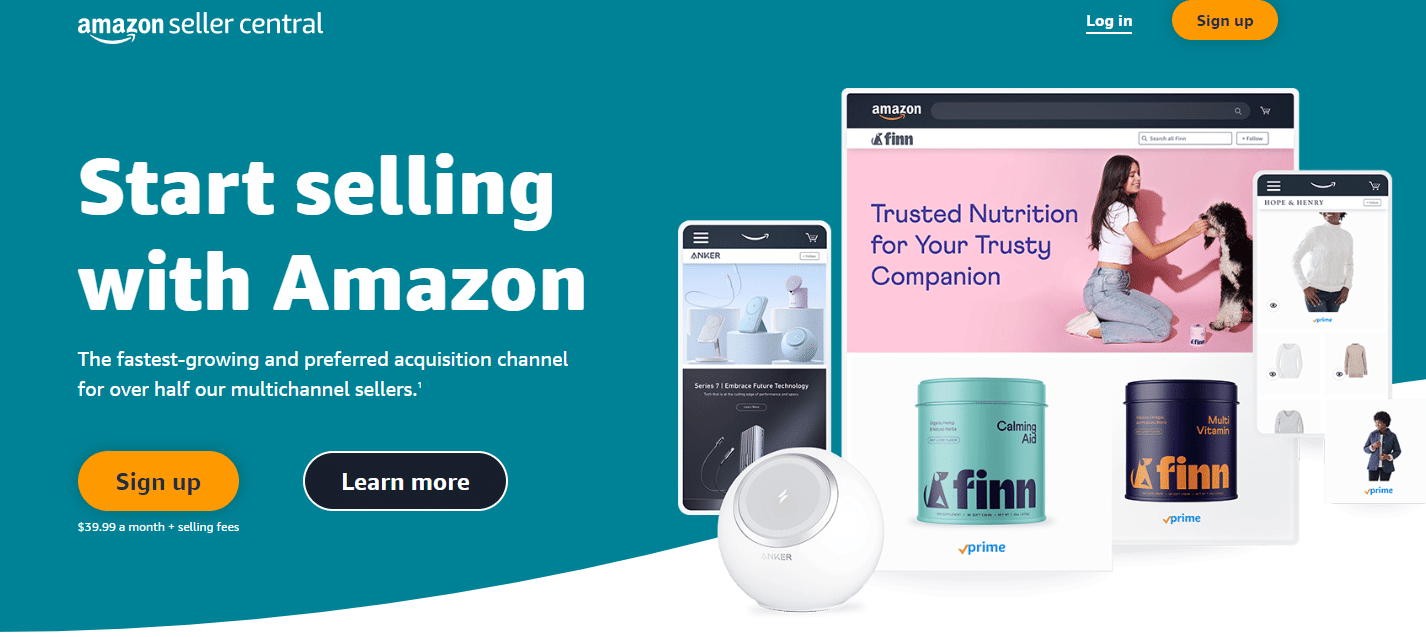
What you can sell on Amazon depends on the product, the category, and the brand. There are categories that are open to all sellers. But, there are also some that require approval to sell, some that can’t be sold by third-party sellers, and some items that require a professional seller account. There are also FBA product restrictions.
Amazon’s Seller Central breaks down all of the product restrictions and how to request approval. Seller Central is also where you will add a product to your store, and you can do this using one of two methods.
- You can add a product that is already on Amazon
- You can “create a new product listing” when you are uploading a brand new product that is currently not for sale
When adding a product that is already on Amazon, you can use the existing product catalog before selecting your product listing category and subcategories.
Don’t Leave Anything Blank
Once you’ve selected the proper category for your item, the most vital part of the process comes next — filling out the product listing information. Don’t leave anything blank when you do this. Fill out all three tabs because incomplete listings will be suppressed.
The first tab is vital info: your product name, manufacturer, brand name, manufactures part number, package quantity, product id, etc…
The second tab is for variations. If you are selling a product that has different variations based on things like size and color, then you choose what is applicable. Start by creating a parent ASIN (Amazon Standard Identification Number) for the product, then list all of the child ASIN’s underneath for the variations.
Note: The ASIN (Amazon Standard Identification Number) is a unique 10-digit barcode that must be displayed on all products, except for books. Amazon uses the ASIN to track inventory and to determine who the products belong to. An ASIN is assigned to each new product that you create on Amazon.
The variations tab is also where you will select your fulfillment channel. For FBA, you choose Amazon.
The third tab is for images, which is where you will upload all of your product photos for your listing.
Optimize the Listing for SEO
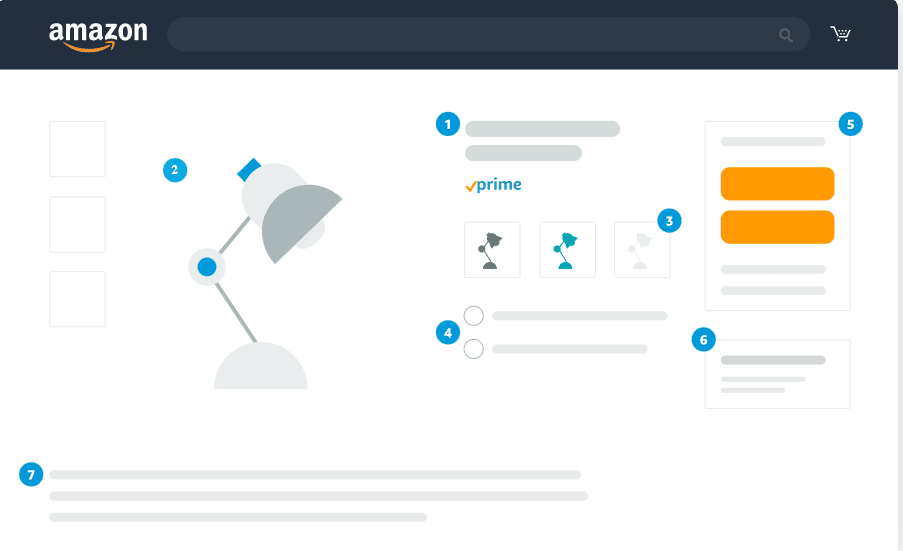
When writing your product descriptions, you must optimize the listing for SEO if you want to make money on Amazon. Your titles and descriptions should include keywords that customers are using in the search engine. This is how more customers will find your store and the products you are offering. To help find the proper keywords for your listing, use a tool like SellerApp.
A product detail page is where your potential customers should be able to find all of the relevant information about your item.
Remember, this is also where the Amazon buy box comes into play. If you are selling the same items as other retailers, then getting the algorithm to put you in that buy box regularly is crucial. When multiple sellers offer the same product, Amazon combines data from those various offers on a single detail page.
If you are selling private label products in your Amazon business, using proper keywords in your title and product description will optimize your listing for SEO and put your product in a better spot in the search results.
In the title, you are allowed up to 200 characters, and you should capitalize the first letter of every word. Proper keyword usage and SEO optimization will increase the chances that customers will find your listing.
Note: Avoid keyword stuffing in your titles and descriptions. Shoppers don’t like it, Amazon doesn’t like it, and it looks bad for your store. One or two keywords is plenty.
Bullet Points Are Ideal
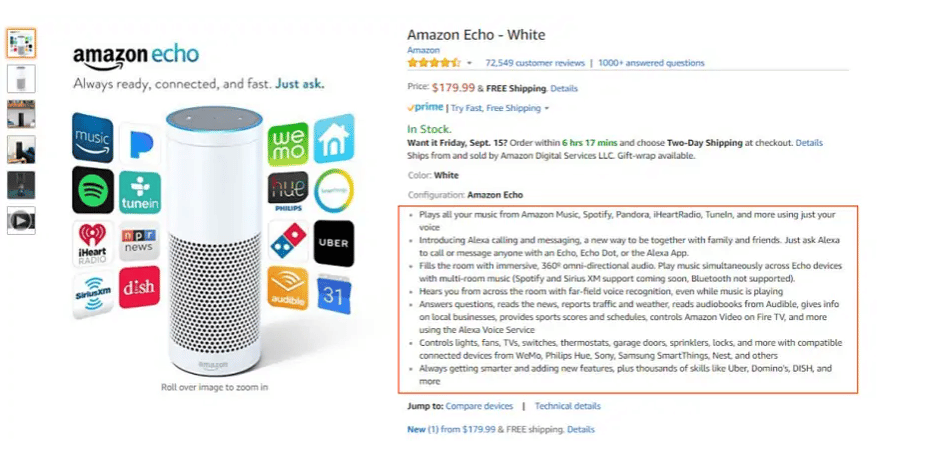
Product descriptions with bullet points are easier to read. They are also an ideal way to communicate your product’s variations, like different colors, sizes, or scents. You are allowed up to five bullet points to maximize your product’s visibility.
They should feature short, concise sentences that describe your product while highlighting the key features and benefits. Do not include shipping information in your product description or time-sensitive information.
Photography is Crucial
Photography in your Amazon listing is crucial. You are allowed a maximum of 10 images. You should include a minimum of five high quality and high resolution images for your listing. Poor quality photos will almost guarantee that customers will skip your listing and ignore your store.
- Images should be 500 x 500 or 1,000 x 1,000 pixels to increase listing quality.
- Make sure the product takes up 85 percent of the image space.
- Don’t add a logo or watermark to the product images.
6. Sell Your Product
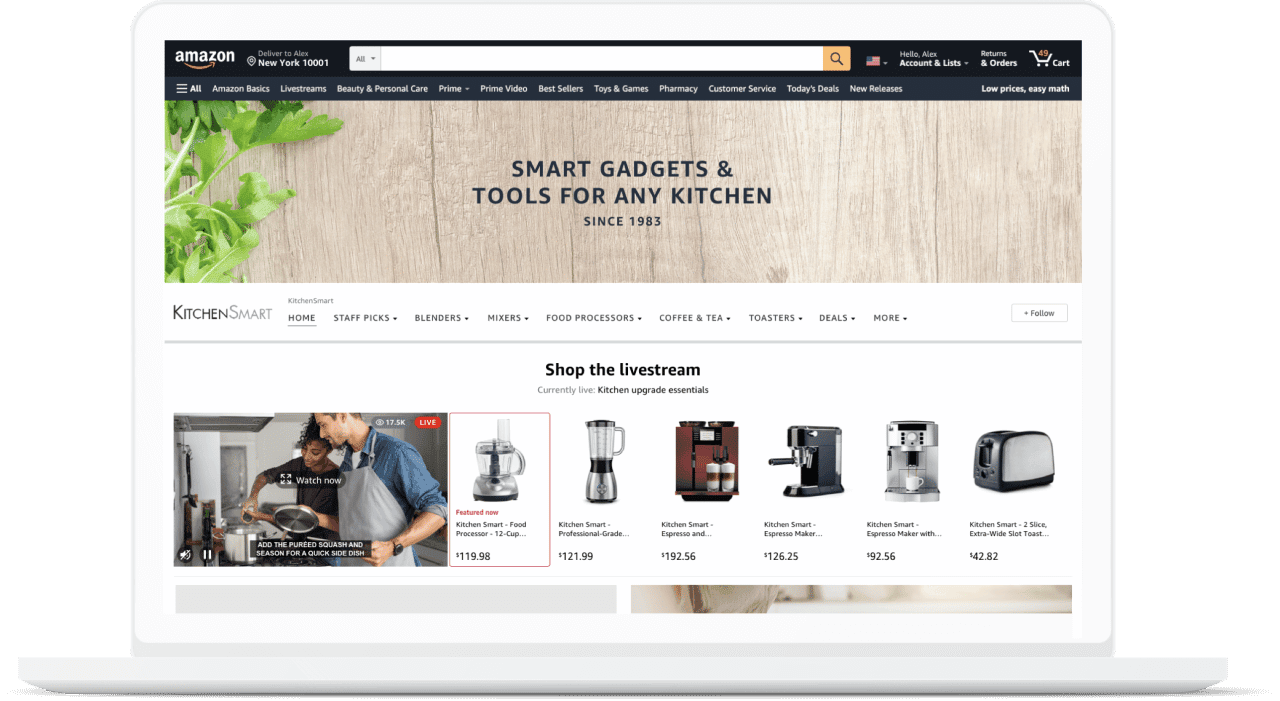
When you have your suppliers set up and have completed your Amazon listings, that doesn’t mean it’s time to sit back and wait for orders. In order to increase your visibility and sales to make money on Amazon, you must use advertising.
Ads on Amazon
Sponsored ads on Amazon can help you boost your product visibility, reach more shoppers, and increase your sales. When you are ready to grow your business, Amazon offers different advertising options that can fit any size budget.
You will pay only for the clicks that your ads receive. And, Amazon offers campaign reports that will track the ad spend and performance so you can learn what’s working and adjust campaigns as needed.
- Sponsored products: For individual Amazon product listings. These ads appear within shopping results pages and on product detail pages. Sponsored ads can get your products on the front page of Amazon search results almost immediately.
- Sponsored brands: Showcases your brand and product portfolio. Features your brand logo, a custom headline, and a selection of your products. These ads appear in shopping results pages.
- Sponsored display: a new self-service advertising solution that can help you reach relevant audiences with ad placements that appear on and off Amazon.
- Stores: A custom multipage Amazon shopping destination that lets you highlight your brand story and product offering. This is essentially your own Amazon page that sells your products exclusively.
Ads on Other Platforms
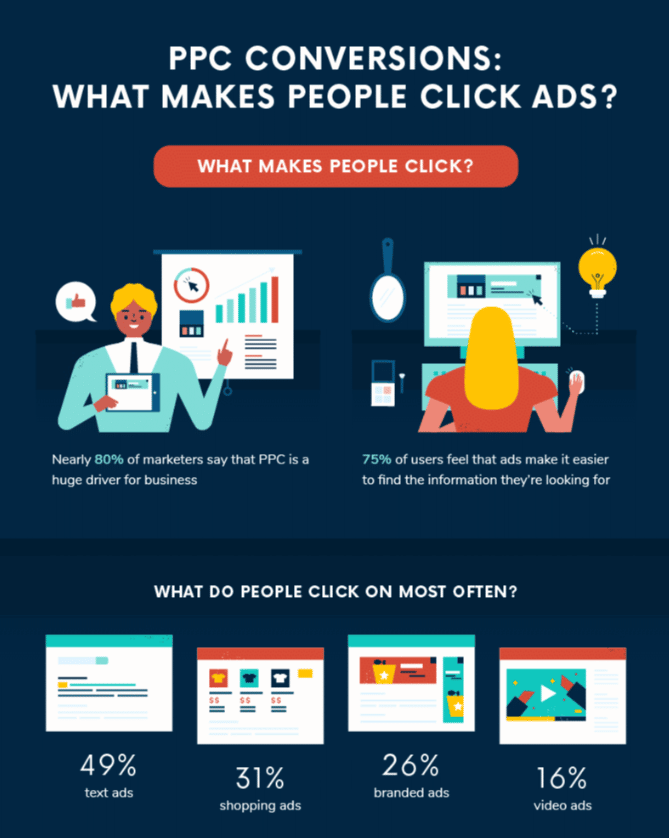
When you drive traffic to your Amazon listings with ads on other platforms, that deserves a reward. That’s why Amazon created the Amazon Brand Referral Bonus program. It gives you the opportunity to earn a bonus from all of your non-Amazon marketing efforts and improve your advertising efficiency.
Google Adwords is a pay-per-click (PPC) advertising strategy that can be effective for driving traffic to your listing so you can make money on Amazon.
Facebook Ads are also used to drive traffic to Amazon listings because a significant portion of consumers actually start product searches on Facebook. The big advantage of using Facebook is that you can target specific demographic groups and interests.
What’s more, you can collect valuable customer data like email addresses when you send them to a landing page instead of directly to the product listing. This kind of information collection is invaluable when launching new products and attempting to grow your customer base.
To run ads for your Amazon business, you’ll first need to create a dedicated Business Page on Facebook.
TikTok
To target the youth market, promoting your brand and products on TikTok could be a great option. Paid ads can entertain users and connect them with your products. You can also create your own business page and post short videos to promote your products.
Get Featured in Website ‘Best of’ Posts

Getting featured in a website’s “Best Of” posts is also a great way to drive traffic to your listings. Each site has different criteria for being featured, but it usually revolves around content quality.
Try Social Media Influencers
To promote your brand and products, consider advertising with social media influencers. Depending on your target market and the size of the audience, sponsorships could help drive traffic that converts to sales.
Buy Placements on Relevant Email Lists
Buying placements on email lists is not recommended for finding paying customers.
Try Discount/Coupon Sites
To get your products noticed on Amazon, consider trying a discount or coupon site. Amazon discount sites are set up specifically for Amazon sellers to showcase their products, boost sales, and score those helpful reviews.
Reputable Amazon discount sites include Cashbackbase, SnagShout, and JumpSend.
Get an Organic Amazon Listing
To improve your ranking in the search results and show up in the first pages of Amazon’s organic listings, focus on conversation rates and ranking factors. Amazon built their search engine to sell products, and their success metrics revolve around revenue and gross margin per search.
With improved conversion rates — turning traffic into paying customers — your pages will be rewarded by showing up higher in the organic Amazon listings.
Ranking Factors
Ranking factors that you can track include are keywords, price, selection, availability, and sales history. The more a product is selling, the more it tends to show up higher on the Amazon results list.
7. Scale Until Saturated
The final way of making money with your Amazon business is to scale until the market is saturated. Once everyone in your target market has been reached, and the product has run its course, it’s time to remove the listing and start selling a different product.
Things to Consider Before You Begin

There is a lot to consider before you begin selling on Amazon. Just like a brick and mortar store, you must think about liability insurance, sales taxes, cash on hand, and inventory management.
Liability Insurance
Amazon’s policy requires Pro Merchant sellers to have liability insurance. In Seller Central, you can find the Pro Merchant Insurance Requirements that states:
“Under section 9 of the Amazon Services Business Solutions Agreement, you are required to obtain and maintain commercial liability insurance within 30 days after exceeding $10,000 in gross proceeds in sales in one month on Amazon.com, or if otherwise requested by us. You may purchase either commercial general, excess, or umbrella liability insurance. When you decide on an insurance, your policy should cover all products you list for sale on Amazon.”
Sales Taxes
As an FBA seller, collecting sales tax on your products can get complicated based on your location, your products’ location, and your buyers’ location. Do your research on sales tax before you begin.
Cash Intensive Business
To get more sales, you often have to spend money to make money. Amazon FBA can be a cash intensive business — no matter if you source products from retail arbitrage, online arbitrage, wholesaling, or private label. Purchasing inventory up front can be expensive. Consider how much money you will need to purchase your inventory before you get started.
Running out of Inventory
Running out of inventory can also be an issue, depending on the products that you are selling. Before you start, create a plan for sourcing inventory and a backup just in case you run out.
Always have at least one item that you are working on, have products in transit, and keep an eye on your Amazon warehouse inventory to make sure you won’t run out before your products that are in transit arrive at the fulfillment center.
When you run out of inventory, you will no longer appear as a seller on the listing and you will lose out to your competitors. Your listing rankings will drop, too, which can cause it to lose momentum.
Can You Make Good Money on Amazon FBA?
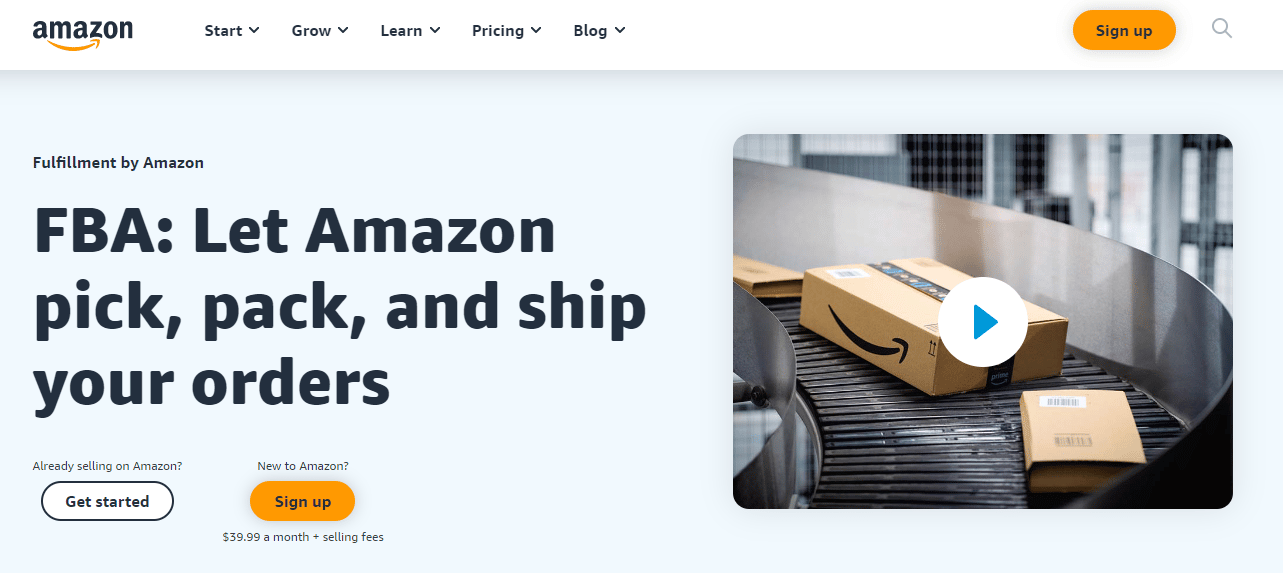
Yes, you can make good money on Amazon FBA as a third party seller. The right ecommerce store can be a profitable business if you put in the work, do your research, pick the right products, use the right tools, and sometimes get a bit lucky when it comes to shoppers seeing your listings.
In addition to Amazon FBA, other money making opportunities related to Amazon include the Amazon associates program with affiliate links (which has many alternatives), and you can always join Amazon handmade for selling handcrafted products.
None of this is a get rich quick scheme, and it’s definitely not an automatic success. But, it can be quite lucrative if your online business is built correctly.
I hope my guide on how to make money with Amazon FBA has helped you in your pursuit of eCommerce success.
